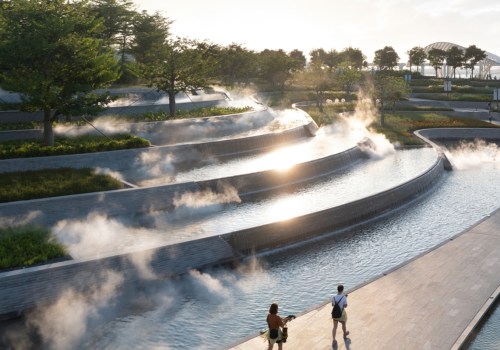Landscape architecture is a multifaceted field that blends art, science, and environmental awareness to create functional and aesthetically pleasing outdoor spaces. The techniques used in landscape architecture are diverse, reflecting the range of environments and projects landscape architects work with. One key technique is site analysis, where architects assess the physical characteristics of the site, including topography, soil, climate, and existing vegetation. This analysis informs decisions about the placement of various elements and the choice of plants suited to the local environment.
Design and planning are at the heart of landscape architecture. This involves creating a detailed plan that outlines the arrangement of plants, paths, water features, and other elements. Landscape architects use a variety of design principles, such as balance, contrast, and unity, to create a harmonious and cohesive space. They often employ sustainable practices, such as using native plants that require less water and maintenance, and incorporating rain gardens to manage stormwater runoff.
Plant selection is another crucial technique, involving the choice of trees, shrubs, and flowers that will thrive in the site's conditions and contribute to the desired aesthetic. Landscape architects consider factors such as color, texture, size, and seasonal variation when selecting plants. They also plan for the growth and development of the plants over time, ensuring that the landscape remains attractive and functional in the long term.
Hardscape design, which includes the non-living elements of a landscape like walkways, walls, and patios, is also an essential part of landscape architecture. These elements define spaces, provide structure, and enhance the usability of the area. Landscape architects choose materials that complement the natural environment and meet the needs of the space, whether it's a tranquil garden path or a durable, high-traffic patio.
Incorporating architectural elements, such as pergolas, gazebos, and outdoor lighting, adds both functionality and aesthetic appeal to a landscape. These structures can provide shade, shelter, and spaces for outdoor activities, while lighting enhances safety and creates ambiance.
Another significant aspect is the integration of environmental and energy-efficient practices. For instance, home window tinting can be part of a broader sustainable design, helping to reduce heat and glare in adjacent outdoor living spaces and inside the home. This technique shows the interplay between landscape architecture and other home improvement practices, contributing to an overall environmentally conscious design.
Water management is also crucial, involving the design of irrigation systems and water features that are both efficient and visually appealing. This includes the creation of naturalistic ponds, streams, or waterfalls, and the use of irrigation systems that conserve water.
In conclusion, landscape architecture is a complex field that requires a deep understanding of the natural environment, design principles, and sustainable practices. By combining these techniques, landscape architects create outdoor spaces that are beautiful, functional, and environmentally responsible.







